Würzburg is worth visiting solely for its UNESCO-listed prince-bishop’s palace and gardens. But as I discovered, there’s more to this friendly small city, surrounded by vineyard-laced hills.
For many visitors, Würzburg is the starting point of Germany’s Romantic Road but it is also an easy day trip from Nuremberg or Frankfurt. For me, it was a superb stopping point between Bavaria’s Passau and Aachen in Western Germany.
One day in Würzburg is enough time to hit its highlights with ease. Read on to discover how I did it.
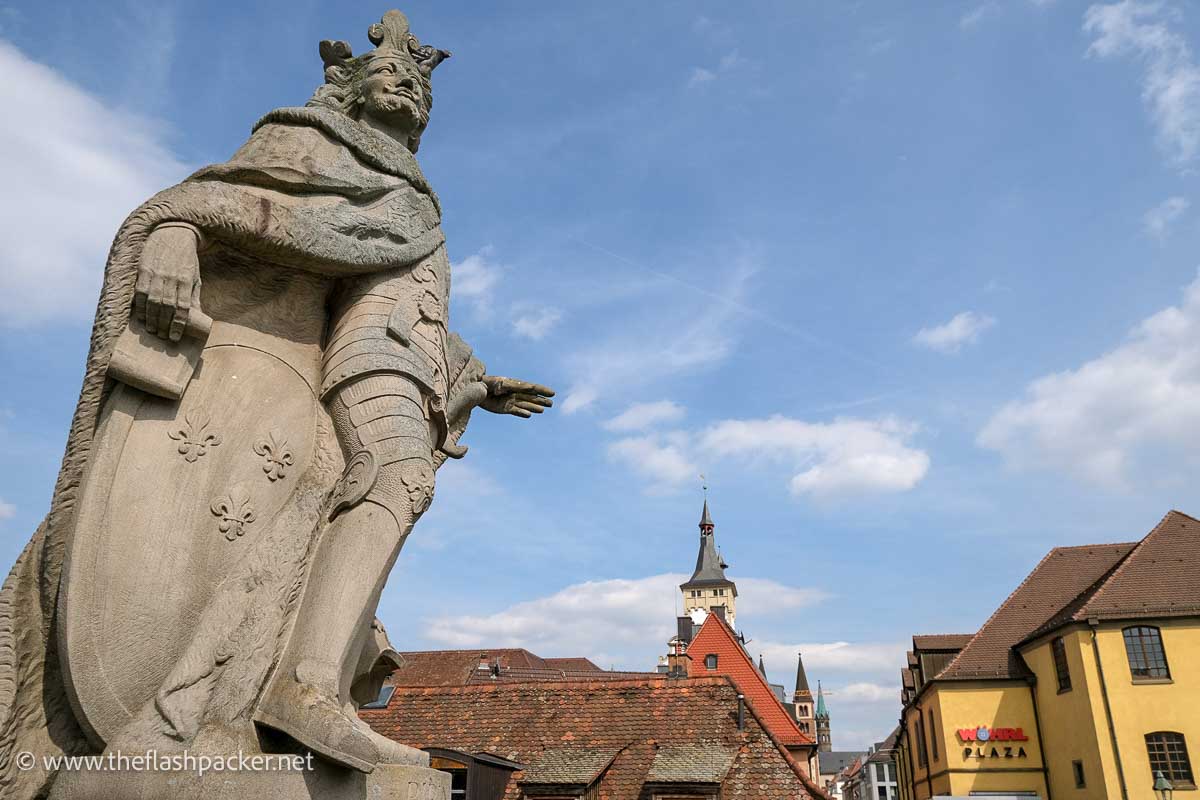
Some articles on this website contain affiliate links. This means that I may earn a small commission if you make a purchase through these links. As an Amazon Associate, I earn from qualifying purchases. Read the full disclosure here.
A Potted History of Würzburg
Würzburg’s story starts one thousand years before Christ when the Celts built their defences on the site of the current Marienberg Fortress. It became the seat of a Franconian lord in the 7th Century and a religious centre as a place of pilgrimage for the martyred St Kilian.
The powerful Prince-Bishops of Würzburg ruled the city from the 12th Century, transforming it into a Baroque masterpiece, exemplified by the Würzburg Residence. Würzburg grew so powerful that it was considered the unofficial capital of the Holy Roman Empire.
The city flourished culturally and economically during the Renaissance and Baroque periods but an Allied bombing raid in 1945 destroyed much of Würzburg. The devastation was almost equal to that famously inflicted on Dresden.
Although post-war reconstruction restored the town in the not-so-charming way you see across Germany, some of its historic structures were restored, notably the Würzburg Residence.
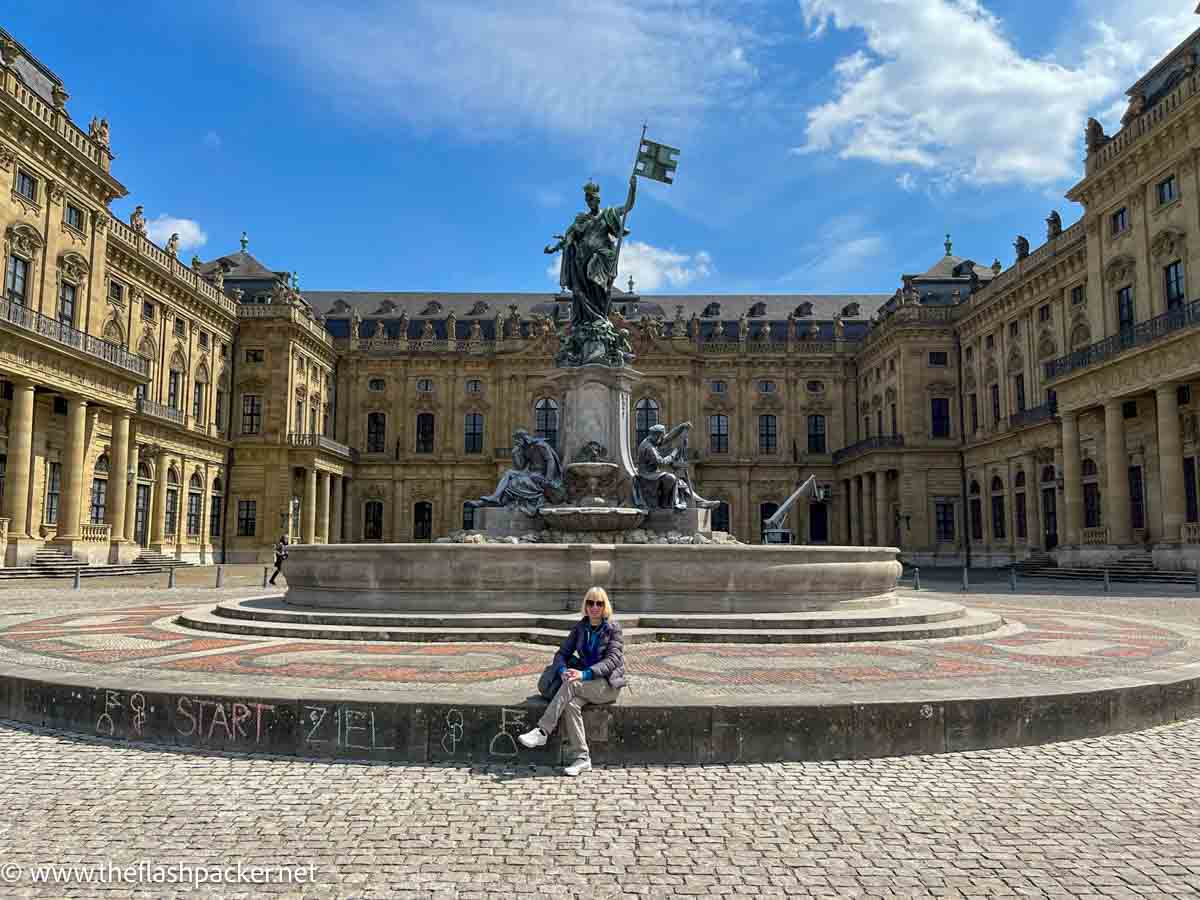
Suggested 1-Day Würzburg Itinerary (+ Self-Guided Walking Tour)
I recommend starting your day in Würzburg at the Residence, exploring its gardens before joining the guided tour included in your entrance ticket (the English tour is at 11 am). Spend your afternoon visiting the city’s other main tourist attractions including St. Kilian’s Cathedral and the old town (Altstadt). If you have the time and energy, you can finish your day at the Marienberg Fortress.
As the Würzburg’s centre is compact it is walkable. You won’t need public transport to get around.
Walking the entire route from my recommended breakfast café covers just over two miles. Here’s a map you can use as a self-guided walking tour if helpful. For step-by-step directions and to send to your phone, click here or on the map.
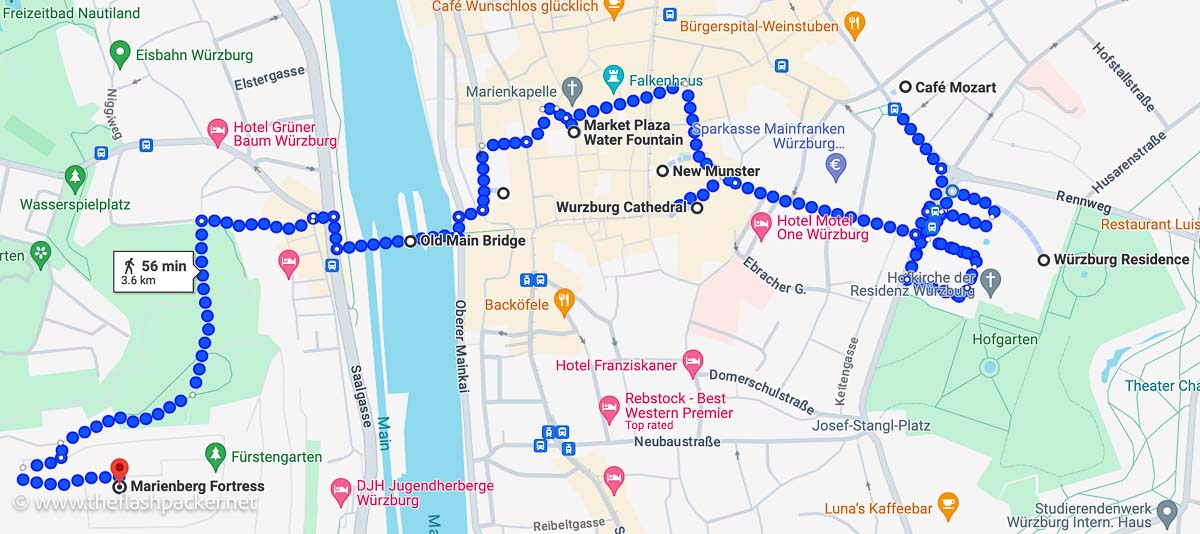
Start your day with breakfast at the friendly Café Mozart at Theaterstraße 21, conveniently on the route from the train station to the Residence if you are visiting Würzburg as a day trip.
Würzburg Residence
Hailed as one of the most gorgeous palaces in Europe, the Würzburg Residence (Würzburg Residenz) is an architectural superstar. Dubbed the “German Versailles”, this 18th-century beauty was the palace of the bishop-kings of Würzburg.
The Würzburg Residence was built to impress, conveying the power and wealth of the bishop-kings. Its architect was the then-unknown Balthasar Neumann, Giovanni Battista Tiepolo was the interior decorator and Antonio Bossi was responsible for the intricate stucco work. Together, they created a glorious Baroque and Rococo confection.
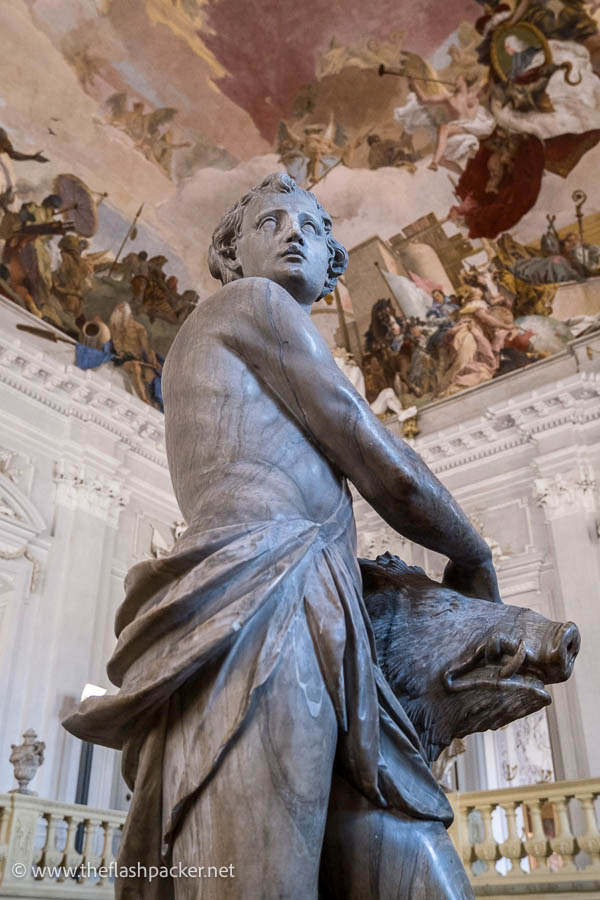
The Court Gardens give those at Versailles a run for their money and are free to visit.
The South Garden is a rhapsody in symmetry with a central fountain, classical sculptures and conical 18th-century yew trees. The terraced East Garden has wonderful sculptures of playful cherubs punctuating its upper levels.
You can find out more in my guide to visiting the Würzburg Residenz.

St. Kilian’s Cathedral (Dom)
Dating from 1040, this is Germany’s fourth largest Romanesque cathedral, albeit one with Gothic spires and Baroque flourishes. St. Kilian’s was another victim of the 1945 bombing raid and rebuilt in the 1960s.
It is light and airy inside with delicate white stucco and an octagonal dome, and the only church I’ve visited that displays a menorah, intended to represent the Old Testament. Memorials and tombstones of the prince-bishops of old populate the cathedral’s nave.
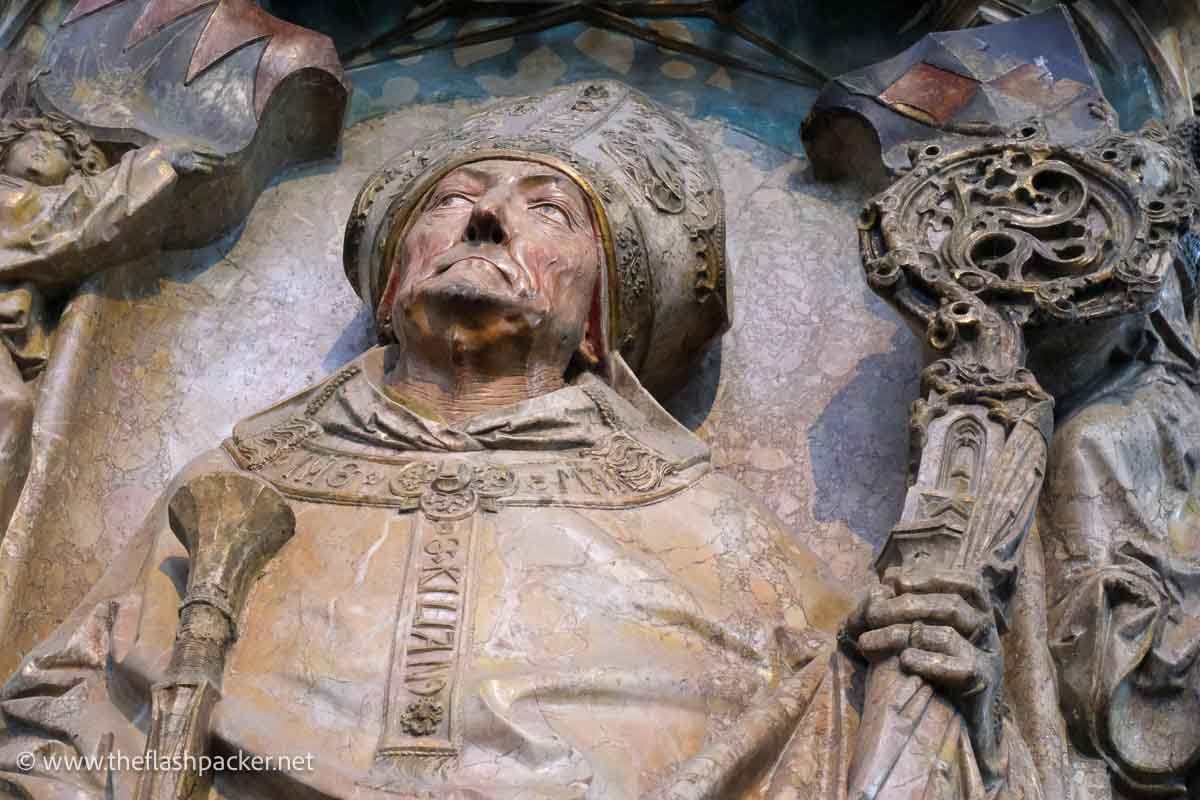
A resurrected Christ in a gilded disc is suspended above the altar.
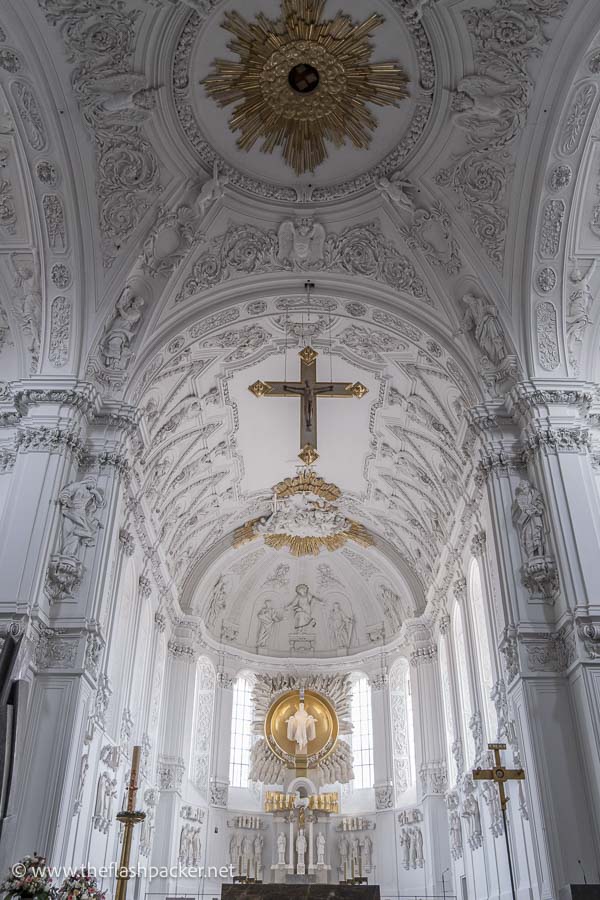
Würzburg Dom is free to visit. Pick up the useful map as you enter.
Neuminster
Much like the Dom, Neuminster is a Baroquefied Romanesque church. It is built on the site where St. Kilian and his two companions were killed in 689 AD.
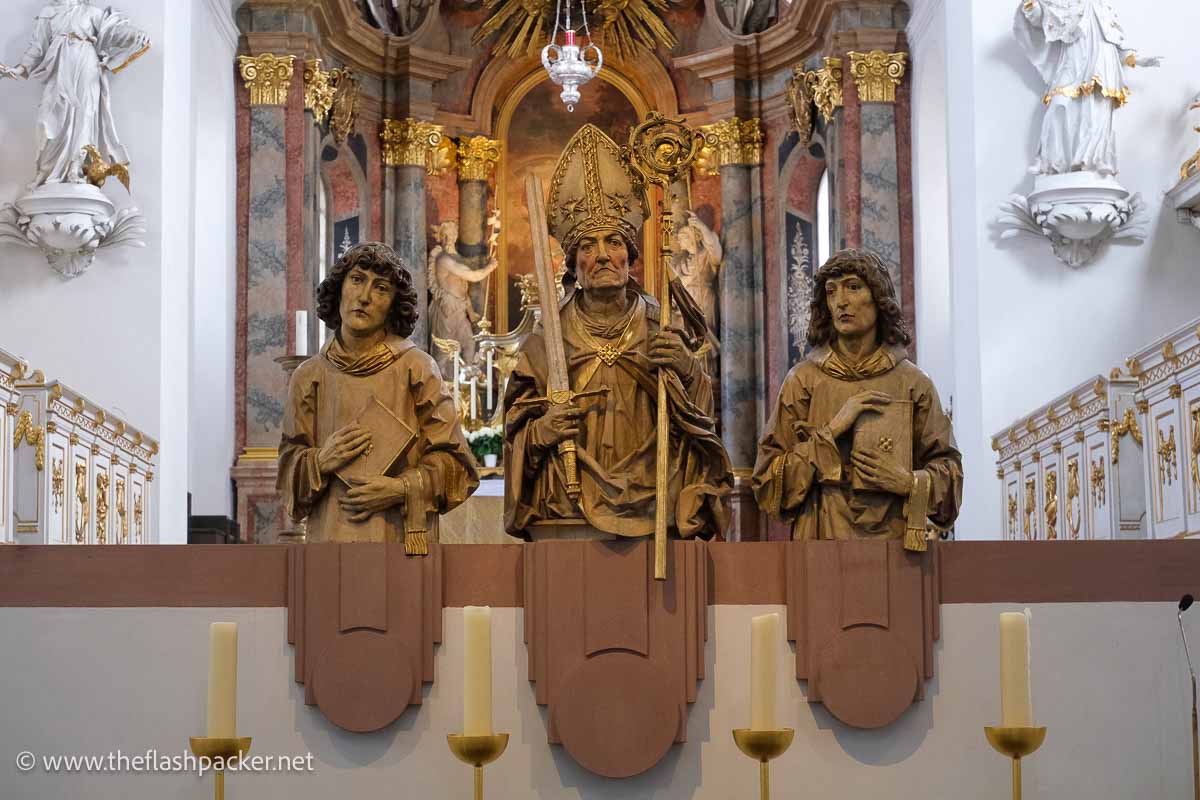
Before you head to the next stop on this itinerary, stop in the peaceful Lusam Garden (Lusamgärtchen).
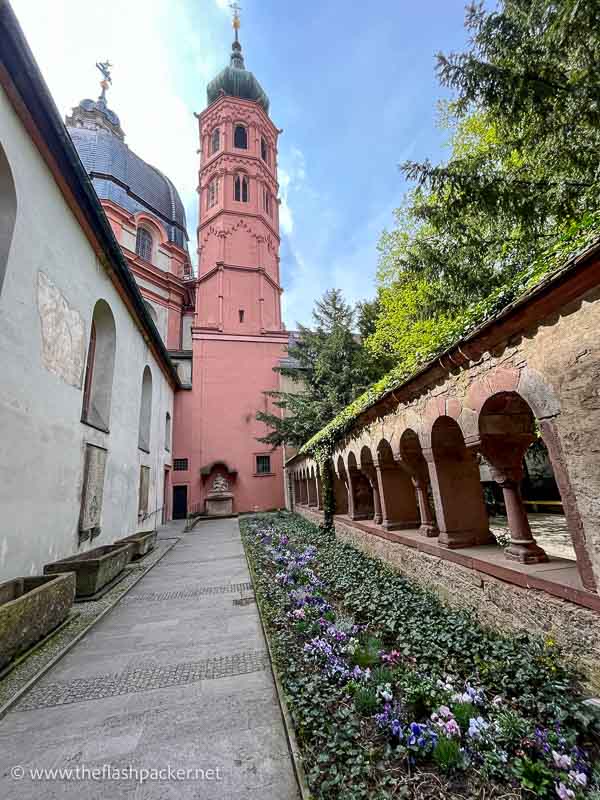
House of the Falcon
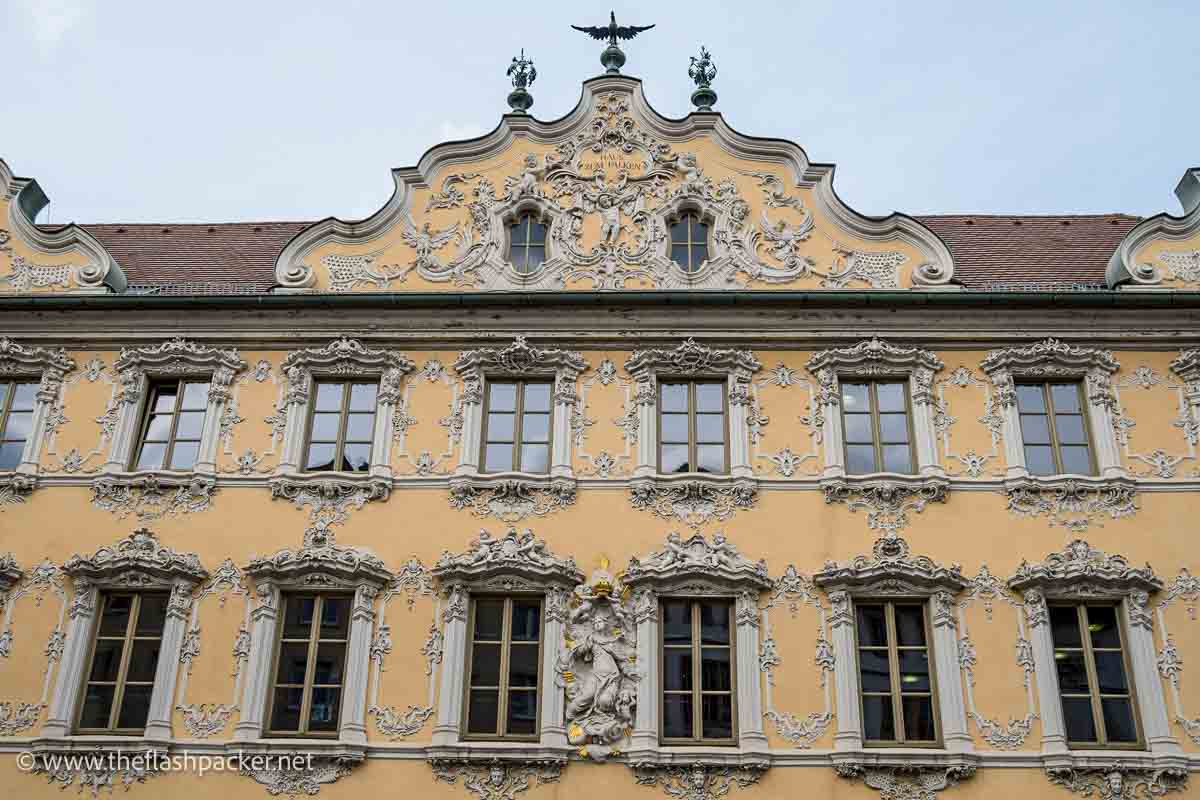
I love the story behind the House of the Falcon on Upper Market Square.
Widow Meissner ran this former pub. In 1751 she commissioned a band of wandering stucco craftsmen to go wild on the building’s façade, hoping to pull in the punters and attract a tax rebate. And they knocked it out of the park, creating a frontage that has become one of Würzburg’s most photographed places.
Market Square (Marktplatz)
Marktplatz is Würzburg’s beating heart.
True to its name, there’s a food and flower market here most days of the week and its Bratwurstand am Markt sells cheap sausage sandwiches. When I visited, its cafes were packed to the gills with locals eating and drinking in the sun.
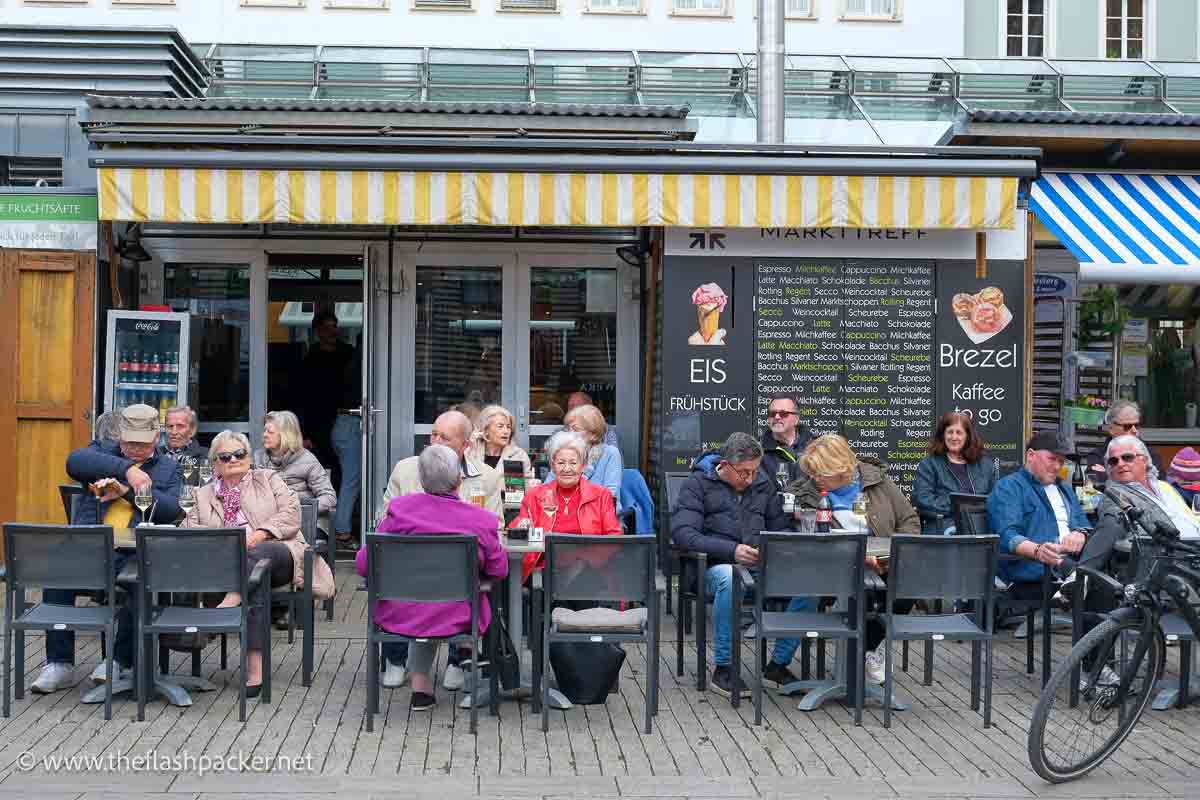
Mary’s Chapel (Marienkapelle)
The two-tone, late-Gothic Mary’s Chapel lords it over the diners in Market Square.
To bankroll the building, the city’s merchants circled it with little shops to generate the necessary revenue. Don’t miss the Adam and Eve statues flanking the church’s side entrance.
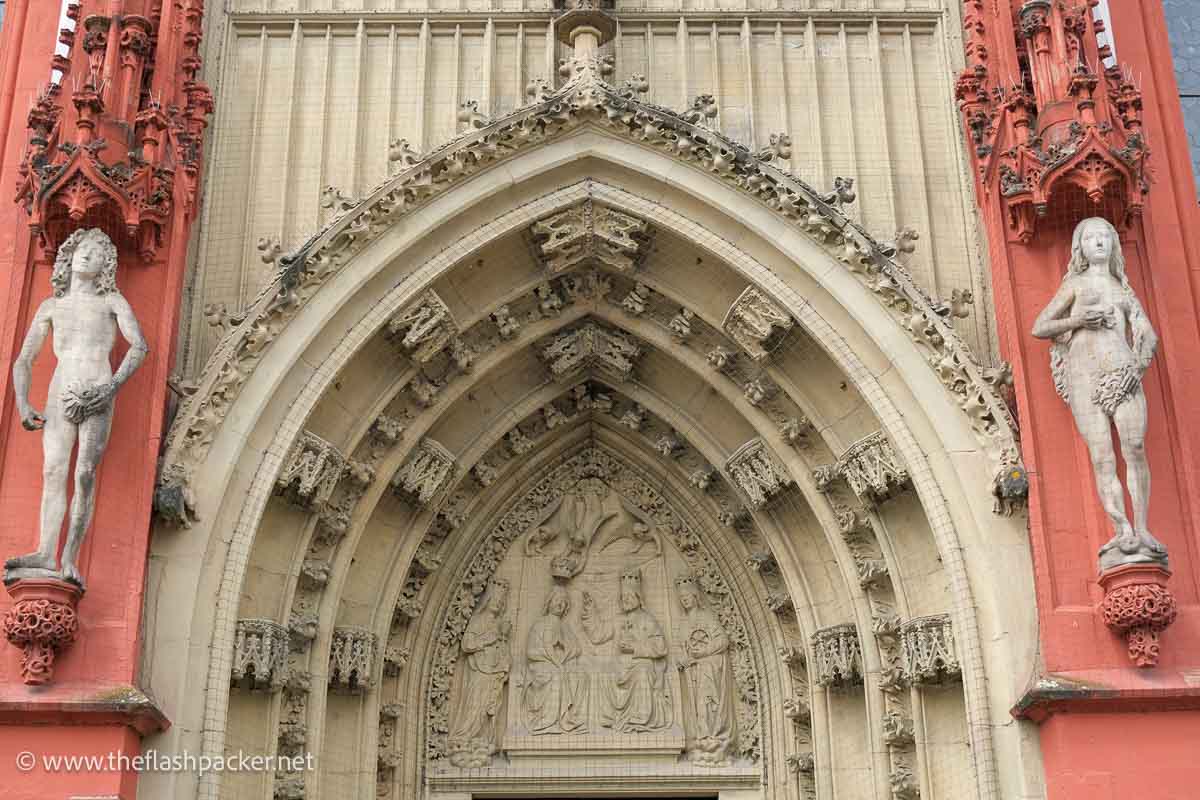
Inside, it’s all flying buttresses and soaring columns. It is the final resting place of Balthasar Neumann.
City Hall (Rathaus)
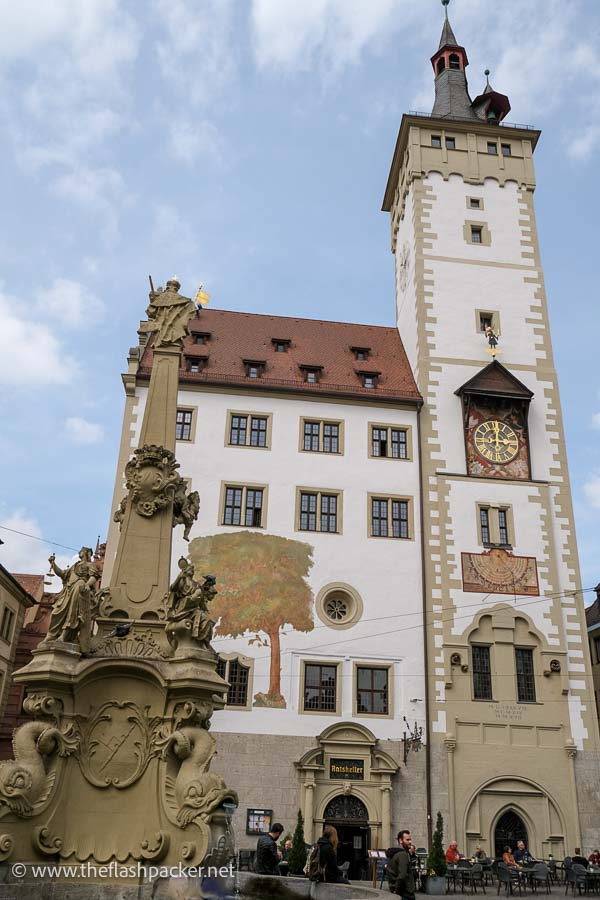
Würzburg City Hall is a modest affair thanks to the power of the prince-bishops. There’s a memorial to the devastating 1945 bombing raid on the left side of the building.
Old Main Bridge (Alte Mainbrücke)
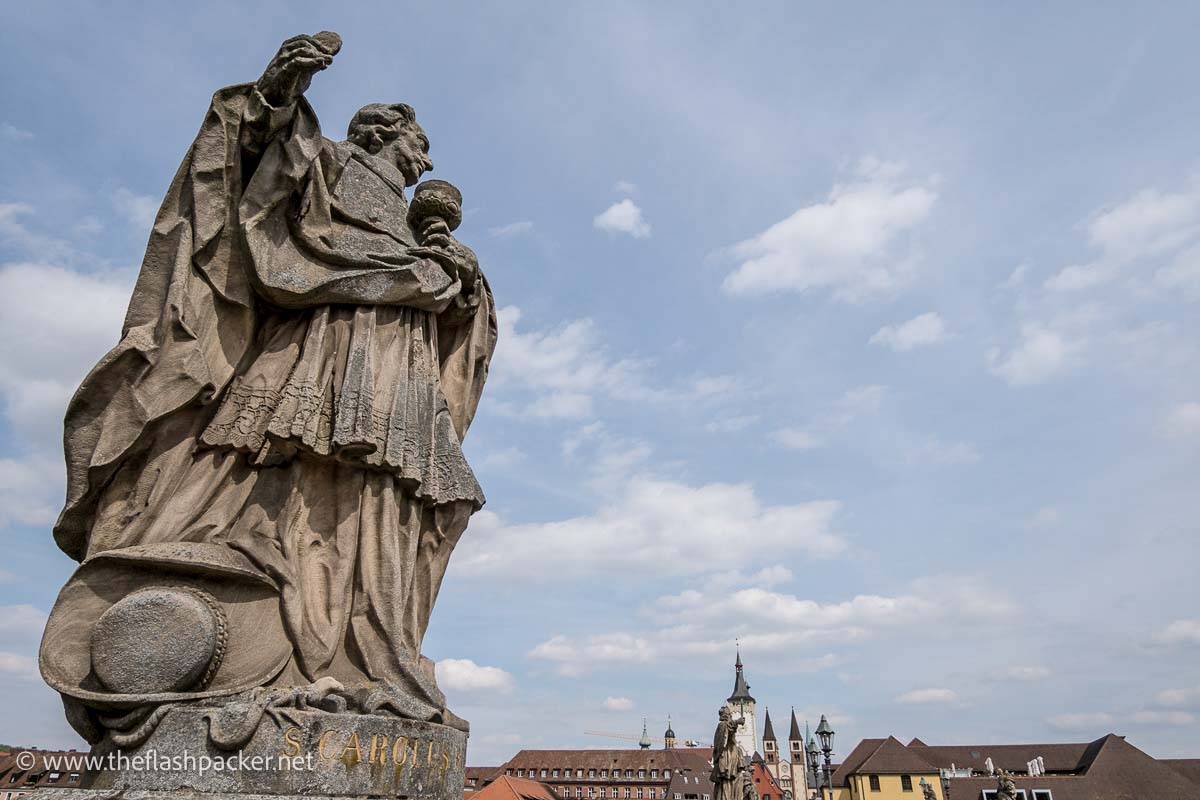
If you have visited Charles Bridge in Prague, Würzburg’s Alte Mainbrücke will feel familiar. This is a lovely spot to linger with a glass of local wine as you soak up the views.
It was erected between 1473 and 1543 to replace a 12th-century bridge that had fallen victim to three centuries of freezing and flooding. The stone statues of Würzburg’s prince-bishops and saints were added around 1730.
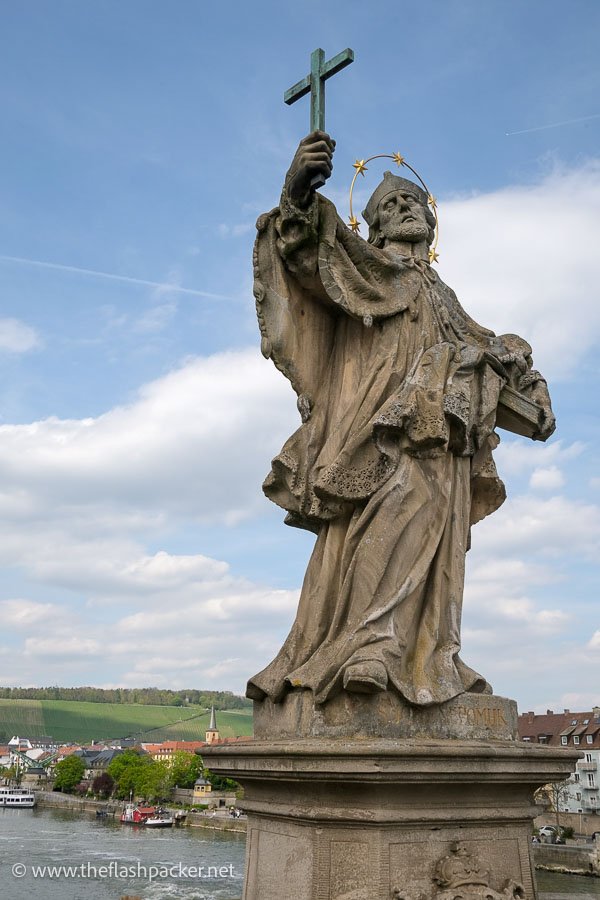
Marienberg Fortress
I confess that I didn’t hike up to the Marienberg Fortress. If there is fuel left in your tank, it is a 20-minute walk from Alte Mainbrücke.
This is the place that the prince-bishops liked to call home before they upped sticks to the Würzburg Residence. Today, it houses museums, including the Mainfränkisches Museum, and offers panoramic views of the city and surrounding vineyards.
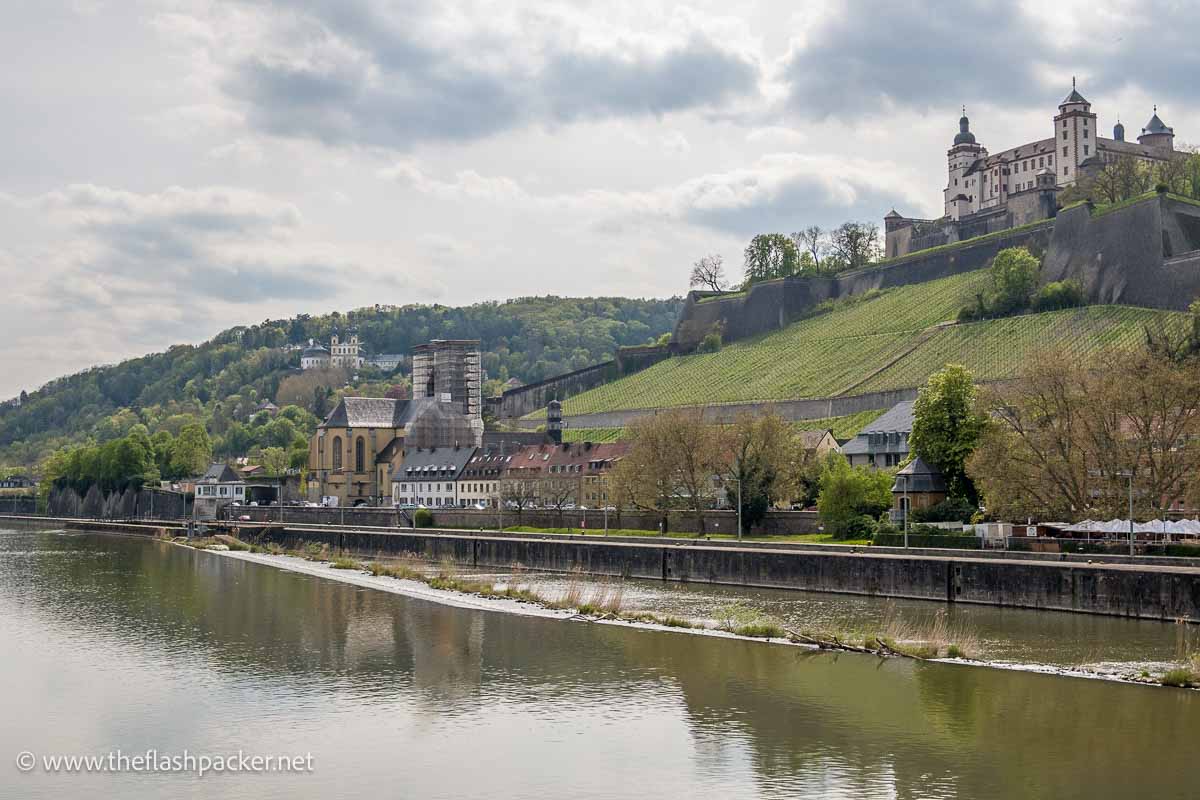
Recommended Places to Eat
I dined well in Würzburg. Here are the two traditional wine taverns (weinstuben) I tried and loved.
Juliusspital Weinstuben (Juliuspromenade 19)
This wine tavern may not have served the best schnitzel in the world but service was friendly and attentive and it has a fabulous wine selection (its winery is Germany’s second biggest).
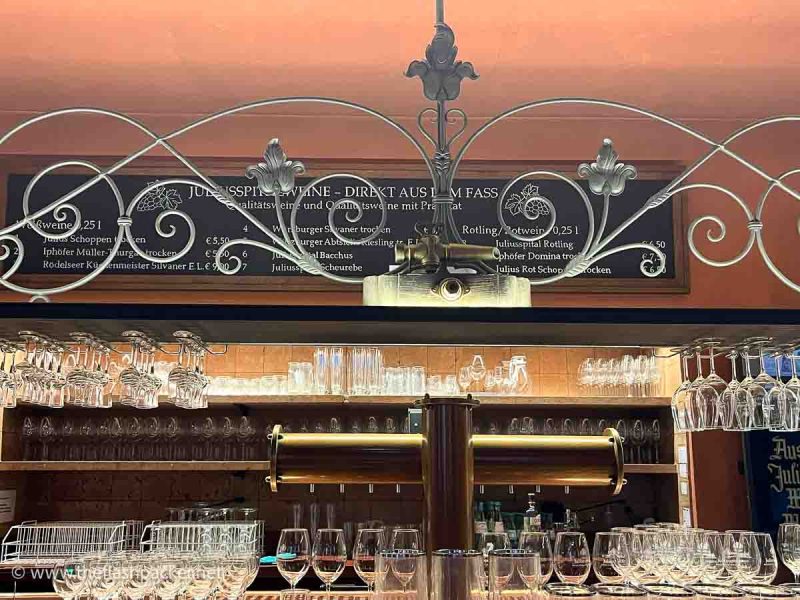
Bürgerspital Weinstuben (Theaterstraße 19)
Bürgerspital is another old and revered Franconian wine estate and their wine tavern served up yummy asparagus soup and the freshest trout ever. Washed down with sensational wine of course.
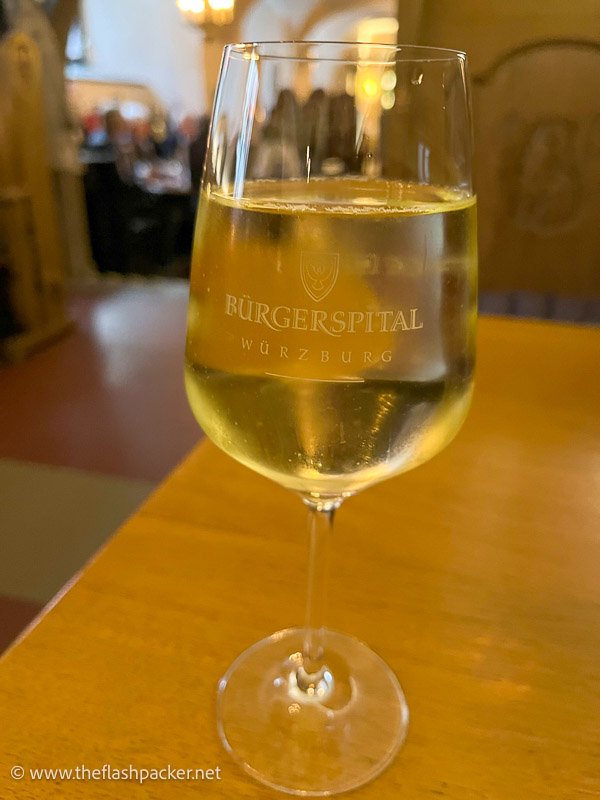
Where to Stay in Würzburg
I stayed in the wonderful Würzburger Hof in the heart of the city’s historic centre, an easy walk from the train station. They offer single rooms for solo travellers.
Staff were welcoming and upgraded me to an exceptional corner suite. It made me wish I was staying for more than two nights.
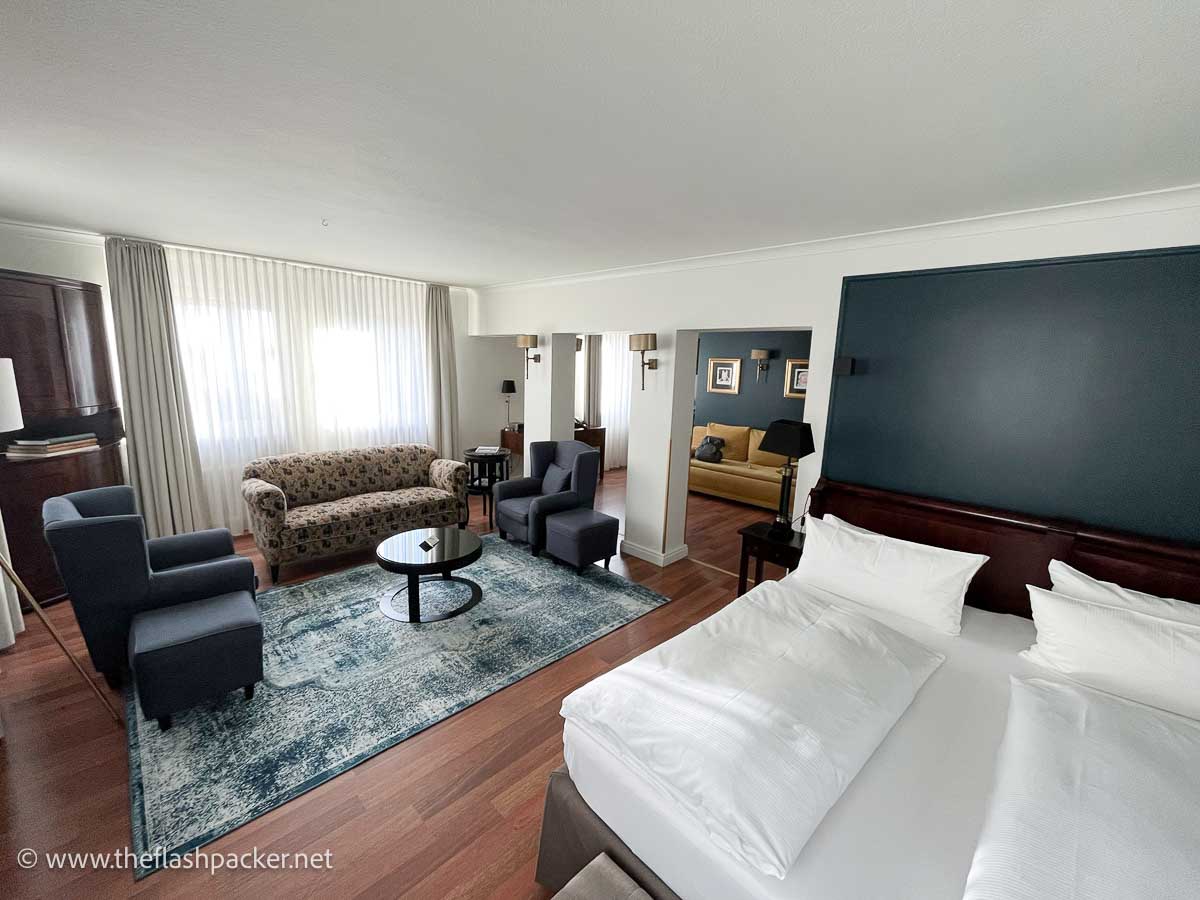
Here are a few more places I had my beady eye on:
The Barthels Boutique Hotel
Another superb centrally-located hotel. Other travellers applaud its design and staff.
Motel One Würzburg
This stylish 3-star hotel in the Altstadt has big rooms, comfy beds and reportedly serves awesome cocktails in its bar.
Getting There
Würzburg’s Hauptbahnhof (main train station) is close to the city centre. Here are the typical journey times by train from nearby cities:
If you prefer travelling by bus, Flixbus connects Würzburg with other German cities.
Use Omio to plan your journey across both travel options.
Where to Next?
And that’s a wrap. I hope you have found my guide to Würzburg helpful and have a wonderful visit.
Before you leave, check out a few of my other articles featuring beautiful Bavaria:
- A Perfect Day in Nuremberg Old Town: Itinerary & Self-Guided Walking Tour
- 6 Magical Day Trips from Nuremberg by Train
- One Day in Rothenburg ob der Tauber: A Self-Guided Walking Tour
- Why You Should Visit Bamberg: A Bavarian Beauty
- Top 10 Things to Do in Passau: Bavaria’s Venice
Happy travels!

About Bridget
Bridget Coleman has been a passionate traveller for more than 30 years. She has visited 70+ countries, most as a solo traveller.
Articles on this site reflect her first-hand experiences.
To get in touch, email her at hello@theflashpacker.net or follow her on social media.
